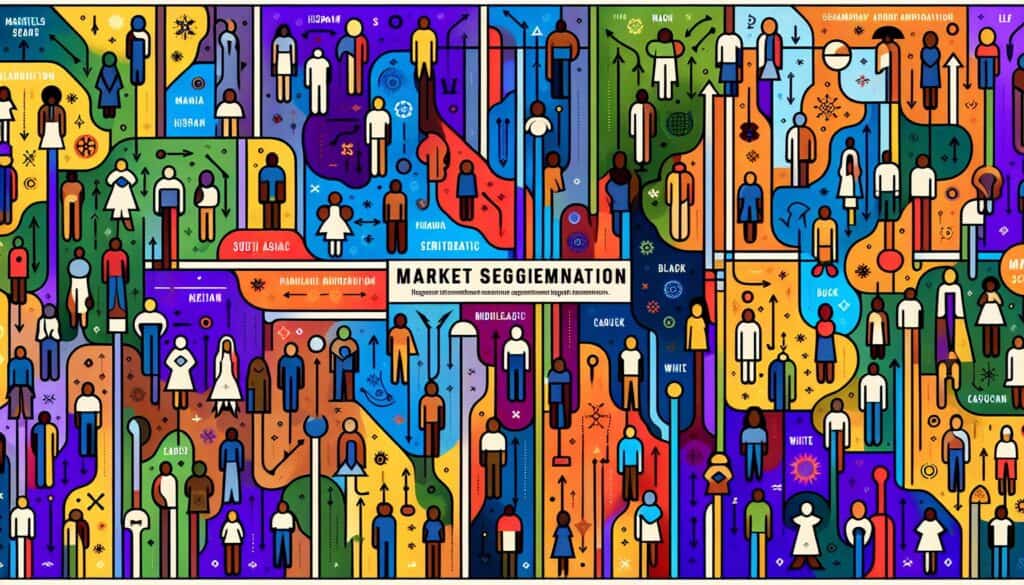将广泛的目标市场划分为更小、更明确的消费者子群体,这些消费者有共同的需求、兴趣和优先事项。
- 方法: 工程, 质量
市场细分

市场细分
- 客户体验, 客户旅程制图, 市场研究, 营销, 营销策略, 产品差异化, 产品定位, 目标受众, 价值主张
目标
如何使用
- 识别关键特征(如人口、地理、心理、行为),对潜在客户进行分组,使企业能够针对特定细分市场制定营销策略和提供产品。
优点
- 使营销更有针对性、更有效;有助于发现新的市场机会;可提高客户满意度和忠诚度。
缺点
- 研究和实施可能成本高昂,耗时长;细分市场必须能够触及,且规模足够大,才能盈利;消费者的偏好会随着时间的推移而改变。
类别
- 客户与营销
最适合:
- 将广阔的市场划分为不同的子群体,以便更有效地调整营销工作和产品供应。
Market segmentation is often utilized across various industries such as consumer goods, technology, healthcare, and automotive, playing a significant role in the design and development phases of products and services. In sectors like consumer electronics, companies segment the market based on age and technological proficiency, enabling the creation of user-friendly interfaces for older adults or high-tech features for younger consumers who are more adept with advanced technology. The initiative for segmenting markets typically comes from marketing teams, product managers, and data analysts who work collaboratively to analyze demographic data, online behaviors, and purchasing patterns. For instance, real estate firms often segment their market geographically to focus on urban versus suburban buyers, tailoring property features, and marketing messages to fit localized preferences. Psychographic segmentation can inform branding strategies by identifying the values and lifestyles of different consumer groups, such as eco-conscious buyers who prioritize sustainable products. Behavioral segmentation delves into consumer habits, allowing companies to create loyalty programs that cater specifically to frequent buyers or those who engage with the brand on social media. The process can result in discovering untapped markets, as organizations gain familiarity with niche audiences, which can lead to enhanced customer satisfaction through offerings that resonate well with each group’s unique needs and preferences. This systematic approach not only refines marketing communications but also enhances the overall product experience, fostering long-term relationships with customers driven by personalized engagement.
该方法的关键步骤
- Define the overall market and its size.
- Identify relevant segmentation variables: demographic, geographic, psychographic, and behavioral.
- Develop profiles for each segment based on identified characteristics.
- Evaluate the attractiveness and feasibility of each segment.
- Select target segments for marketing efforts and product development.
- Design customized marketing strategies for each selected segment.
- Implement the strategies and monitor performance across segments.
- Adjust strategies as needed based on feedback and market changes.
专业提示
- Utilize advanced analytics tools to identify and visualize patterns within customer data, enabling more precise segmentation.
- Conduct ethnographic research to uncover deep-rooted consumer behaviors and preferences that quantitative data might overlook.
- Implement iterative testing of segment-specific marketing strategies to adapt and optimize offerings based on real-time customer feedback.
历史背景
1960
1980
1983
1990
1995
2000
2010
1950
1980
1980
1986
1994
1995
2000
(如果日期不详或不相关,例如 "流体力学",则对其显著出现的时间作了四舍五入的估计)。














相关文章
制造运营管理(MOM)
制造执行系统(MES)
生产控制计划
人工测试
手动搬运评估表 (MAC)
手动任务风险评估工具(ManTRA)